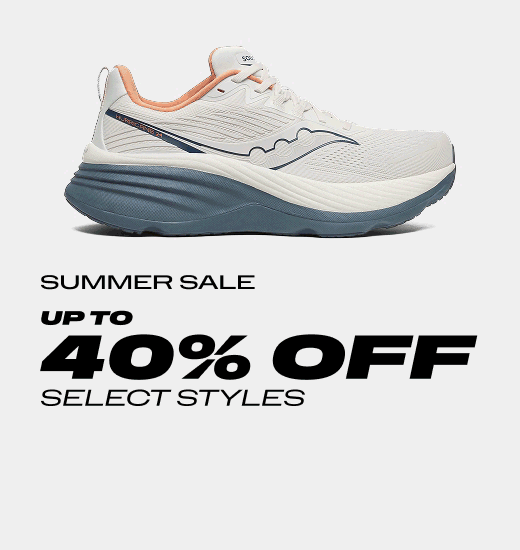SPEND $150, GET 20% OFF | SPEND $200, GET 25% OFF ON SELECT SALE: Buy more and save more staggered promotion valid on certain sale styles on saucony.com from 06/30/25 until 07/12/25 03:15AM EST. Promotion is auto-applied in cart. Discount taken before taxes and shipping charges. Not valid on Hurricane 24, Kinvara 15, Kinvara 15 GTX, Endorphin Speed 4, Triumph 22, Triumph 22 GTX, Triumph RFG, Cohesion 17, Xodus Ultra 3, prior purchases, purchases of gift cards or e-cards, purchases at retail stores, or purchases on other websites. Cannot be combined with any other offer, promotion, coupon or discount. Offer valid on saucony.com U.S. orders only. Promotional codes have no cash value. Void where prohibited by law. Additional restrictions may apply.
Click offer codes below to apply in checkout. Tap offer codes below to apply in checkout.
There are no promotions running at this time. There are no promotions running at this time.
15% Off Your Next Purchase Over $75: Offer valid with purchase of full-price purchase of $75 or more. Not valid on collaborations or prior purchases. Cannot be combined with any other offer, promotion, coupon or discount. Offer valid on saucony.com US orders only. Promotional codes have no cash value. Void where prohibited by law. Additional restrictions may apply.
Like being
first?
Sign up to get the inside scoop on
fresh releases, limited editions,
and exclusive offers.
This site is protected by reCAPTCHA and the Google Privacy Policy and Terms of Service apply.
Sign up to get the inside scoop on fresh releases, limited editions, and exclusive offers.
This site is protected by reCAPTCHA and the Google Privacy Policy and Terms of Service apply. Saucony Privacy Policy
The original running brand
1898 is where it all began. Since then, Saucony has rightfully taken its place as one of the world's leading running companies. Built on a legacy of performance, Saucony continues to offer best-in-class running shoes, running apparel, and timeless retro footwear that has helped shape who we are today. The next great innovation has always been right at our fingertips—from speed shoes to trail running shoes and walking shoes to casual classics. Get exclusive access to new arrivals, top sellers, sales, extended sizes, and online-only offers.




